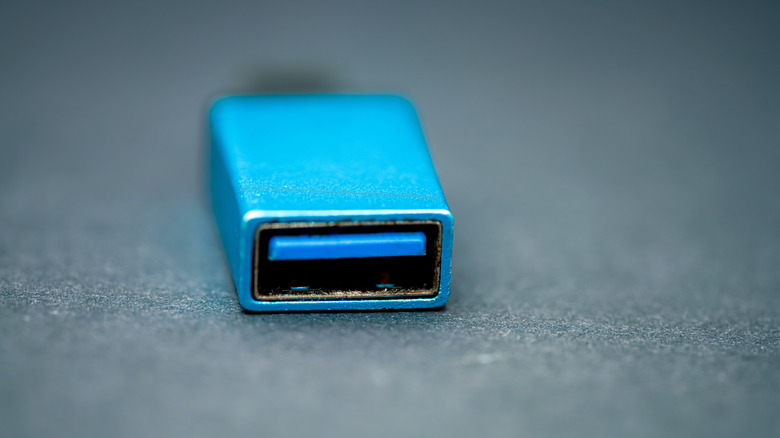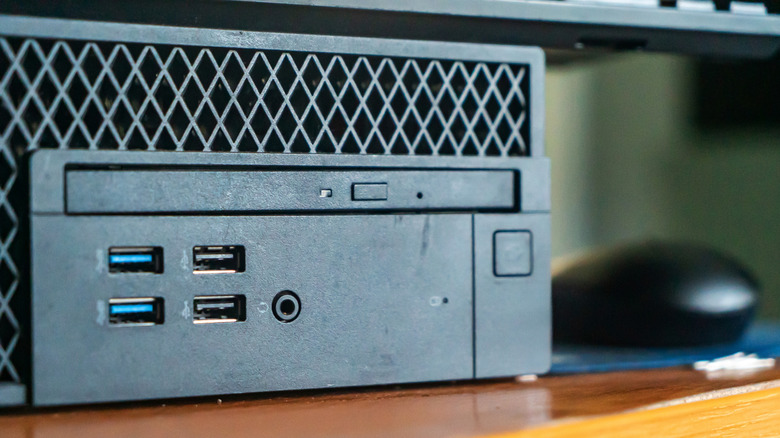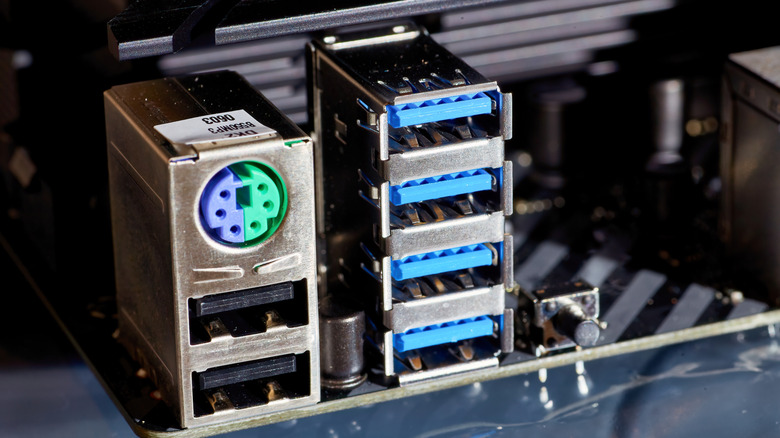What Does It Mean When A USB Port Is Blue?
For over a decade after its 1996 debut, the USB port was a plain, black rectangular slot that powered keyboards and mice. That changed in 2008, when blue ports began appearing on devices to mark the arrival of USB 3.0. The color was a quick way to tell USB 3.0 ports apart from the older USB 2.0 ones. Where USB 2.0 maxed out at data transfer speeds of 480 Mbps, USB 3.0 boosted it to 5 Gbps, with later versions climbing even higher. This upgrade made tasks like transferring large files, backing up external drives, or running high-bandwidth peripherals much faster. It's why blue ports are often highlighted on motherboards, desktops, and laptops geared toward performance.
USB 3.0 also brought full-duplex communication, which allows data to move in both directions simultaneously, a leg up over 2.0, which only supported half-duplex (or single lane) transfers. In practice, that means you can copy files from an external hard drive while it continues to receive new commands without interrupting the transfer.
While blue is the most common convention for identifying USB 3.x ports, it isn't universal. The USB Implementers Forum (USB-IF) defines the technical standards, but not the paint job, so not every manufacturer follows the same visual cues.
What Blue Means Across Different Devices
We've compiled a list (not-at-all exhaustive) of what blue ports can mean on some popular device categories and brands, but keep in mind these are not set in stone. Even within the same brand, manufacturers can use different colors to mark USB 3.x ports, or abandon the convention altogether.
On most laptops, blue means USB 3.x, which means faster speeds. Dell sticks to this pretty faithfully, and Lenovo does the same sometimes or skips colors entirely. HP does both: some ports are blue, others stay black but get the little SS label instead.
For gaming rigs or motherboards, blue usually points to USB 3.2 Gen 1. It's the case on Asus ROG, MSI, and Gigabyte, but high-end boards love to pile on extras, so that same blue port might also support things like BIOS flashback or special peripheral tuning. On PlayStation consoles, blue USB ports mark faster data paths for external storage or accessories. And finally, many docking stations and hubs use blue ports the conventional way: to differentiate USB 3.0 from legacy black USB 2.0. However, newer hubs increasingly use teal or light blue for USB 3.1/3.2 ports.
In short, blue usually means USB 3.x or "SuperSpeed," but it's not a hard rule. Apple does not color-code USB ports and just tells you what's what in the manual. Gaming and enterprise gear sometimes ditch blue for their own brand colors, too. The bottom line is, a blue port will probably be faster than a black one, but color alone isn't a guarantee.
How to Tell What Your Blue USB Port Does
If you're staring at a blue port and wondering what it can actually do, your best bet is still the boring-but-reliable route: check your device manual or spec sheet. Brands don't usually spell things out by color alone, so head to the sections labeled "USB," "ports," or "connectivity." That's where you'll find the details like transfer speeds, charging power, and data support. Look for mentions of "USB 3.0 Type-A" (or similar). And don't get thrown off if you see "USB 3.2" instead—it's the same tech, just rebranded. If you don't have the manual handy, the manufacturer's support page works just as well.
That said, there are some visual hints you can spot on the fly. Ports labeled "SS" mean SuperSpeed—basically USB 3.0 or newer. Tiny numbers like "5," "10," or "20" usually tell you the transfer speed in gigabits per second. A lightning bolt icon often signals extra charging power. And since some manufacturers even color-code ports differently within the same generation, you're better off trusting the markings than the color alone.
If documentation isn't clear, trial and error works too. Plug in a high-capacity flash drive and time how fast a large file moves, or test whether the port charges your phone while the device is asleep. Just keep in mind that cable quality matters; you won't get the most out of a high-speed port if you're not using a corresponding high-speed cable or peripheral. Some operating systems will even show a pop-up message to help you correctly match the port to the peripheral for the best performance. That said, USB 3.0 ports are backward compatible, so you can still use them with older USB 2.0 devices.


